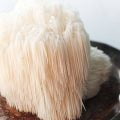By Helen Powers
The kitchen garden at Dundurn Castle in Hamilton has more than 250 heirloom cultivars that help to illustrate Victorian life at this National Historic Site of Canada. The abundant harvest, once needed for a rich man’s lifestyle, has evolved in current times to also support a local food bank.
Located on 20 hectares (50 acres) overlooking Hamilton Bay, on the western tip of Lake Ontario, Dundurn Castle is a 40-room mansion built by Sir Allan MacNab, the premier of United Canada from 1854 to 1856. Now owned by the City of Hamilton, the restored home welcomes thousands of visitors each year for tours and workshops.

Heirlooms are generally defined as open- or self-pollinated plants that were grown before the 1940s or 1950s. During this era, as agricultural operations became large scale, new hybrids were preferred for their high yields of uniform produce that packed and travelled well. At the time, flavour wasn’t as high a priority. This is one reason why heirlooms, which taste better thanks to their unadulterated nature, are making a comeback.
Victoria Bick, Dundurn’s historic garden coordinator, chooses authentic heirloom plants based on a very specific point in time. “The ideal planting era for the garden is 1832 to 1862; however, not all of the plants are within that time frame,” she explains. “The gooseberries and currants, for example, are closer to the 1940s, as the older varieties are just not available anymore, and one of the apple tree varieties originated in Quebec in the 1600s.”

Dundurn’s collection includes herbs, annuals, perennials, vegetables, fruits and medicinal plants in a 0.8-hectare (two acre) plot that’s maintained—with few exceptions—using historically accurate methods. Recognizing that best practices have evolved, some changes have been made, such as using mulch. “Victorians loved bare soil between plants,” says Bick, “but selectively using straw mulch really reduces our time for weeding and watering.”
MacNab kept a copy of Thomas Bridgeman’s American Gardener’s Assistant in his library, and it is an excellent guide for taking care of the garden in all seasons. Spring is the busiest time, but there is much to do in the fall, before the garden is put to rest for the winter. A big priority is building up the quality of the soil because, as Bick says, “If plants are not doing well, the condition of your soil is often the cause.”
In the fall, a layer of manure is tilled into the soil before a crop of winter rye is planted. In spring, this “green manure” will be plowed into the soil to help reduce erosion, add nutrients and build structure.

Tender plants, such as the artichokes, are given winter protection with wooden frames filled with leaves and straw. Because spring is so hectic, fall is when perennials are divided and fruit bushes, such as currants and raspberries, are pruned. Leaves are raked into the compost pile and also placed on planting beds with a thin layer of soil on top.
“One of the last things we do in the fall is plant our garlic,” says Bick. “It is a fantastic thing that all the staff enjoy after a month of ripping things out and chopping them apart. We carefully manure and rake a bed and plant our garlic cloves in early November. They always start to sprout a few green stems above their straw covering by the time it snows, and it is so heartening to go out and see them poking through as soon as the snow melts.”
Like many Canadians this winter, Bick will be deciding which plants to grow in the spring. “In 2017, we grew 87 unique border plants and 100 unique vegetable plants out of our research lists, which currently have 131 possible vegetable options and 95 herb and flower options,” Bick explains.

Historic catalogues and the journal of MacNab’s daughter help Bick cross-reference seed names and find those still available today. “Seeds are now easier than ever to get,” she says, “because heirlooms are so popular again.”
Typically, everything is grown from seed, although last year, Bick found 19th-century eggplant, cayenne pepper, tomato and marigold plants at a local grocery store. She was also excited to order the ‘Prince Albert’ potato from an heirloom repository in Eastern Canada.
As a prominent citizen, MacNab hosted many social functions requiring abundant produce and flowers, and today’s harvest is just as large. Not everything is needed for the museum’s programs, so a large portion of the harvest is donated to a local food bank operated by the Neighbour to Neighbour Centre. In 2016, a drought year, the centre picked up 450 kg (993 pounds) of food from Dundurn and gave it to local citizens in need.

In Dundurn’s kitchen that same year, more than 454 kg (1,000 pounds) of harvested food made its way into historic recipes for cooking workshops and tours, some of which include a lot of eating. Staff also make many preserves and use dried garden flowers for decorating.
Like Dundurn Castle, heirloom plants have stood the test of time. Gardeners collected the seeds of their tastiest and most hardy produce and, year after year, these plants reliably delivered a diverse harvest. “Heirloom plants are tough—they are disease and drought resistant—and that’s why they have been around for so long,” says Bick.

Grade 2 students participating in the educational programming at Dundurn National Historic Site, Hamilton, Ontario
Visitors to the restored mansion step back in time to see the lifestyle of a prominent Victorian family in their beautiful home. The kitchen garden is an important part of the museum experience; however, the heirloom harvest also supports a healthy life for current families in need. In this way, MacNab’s heirloom plants represent something wonderful from both eras.














